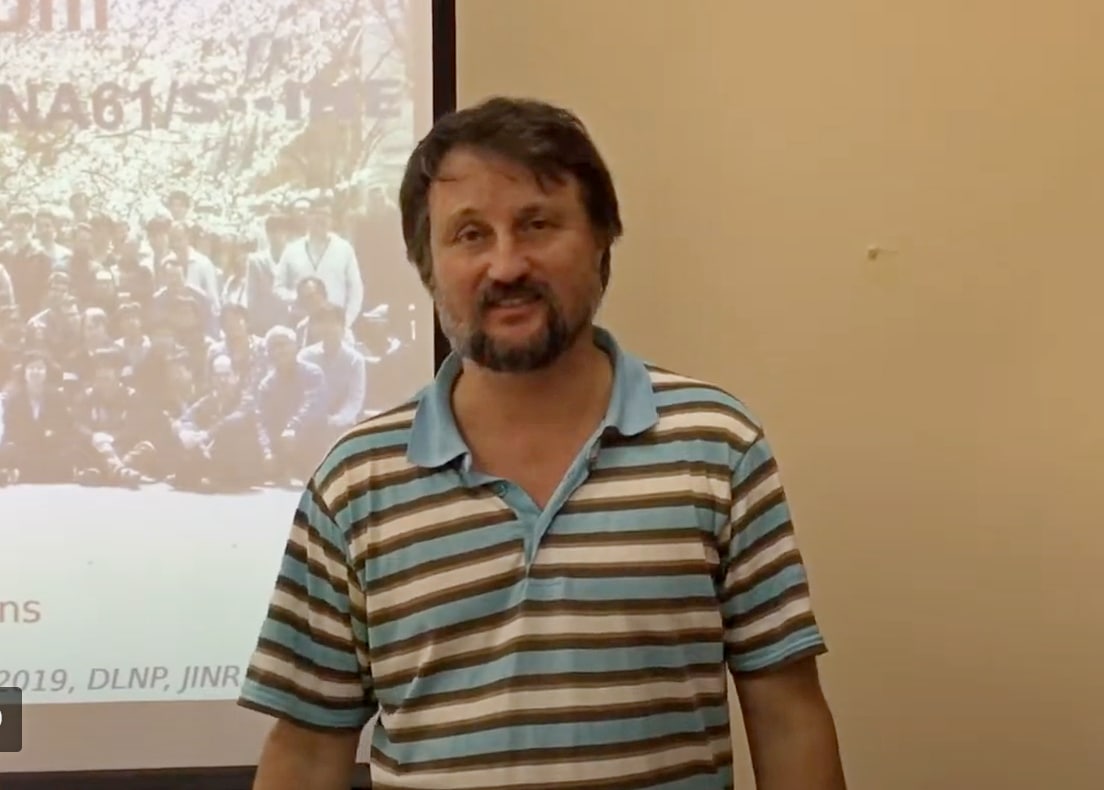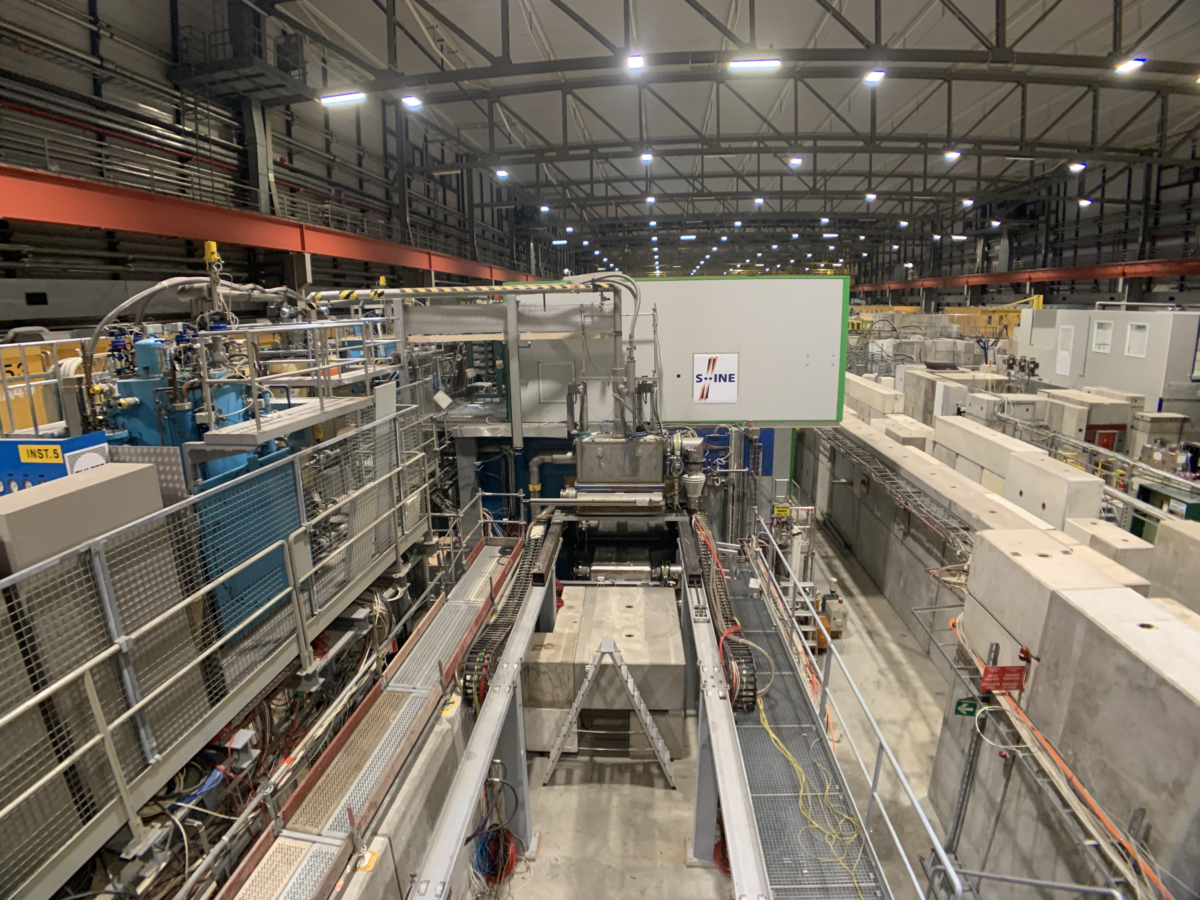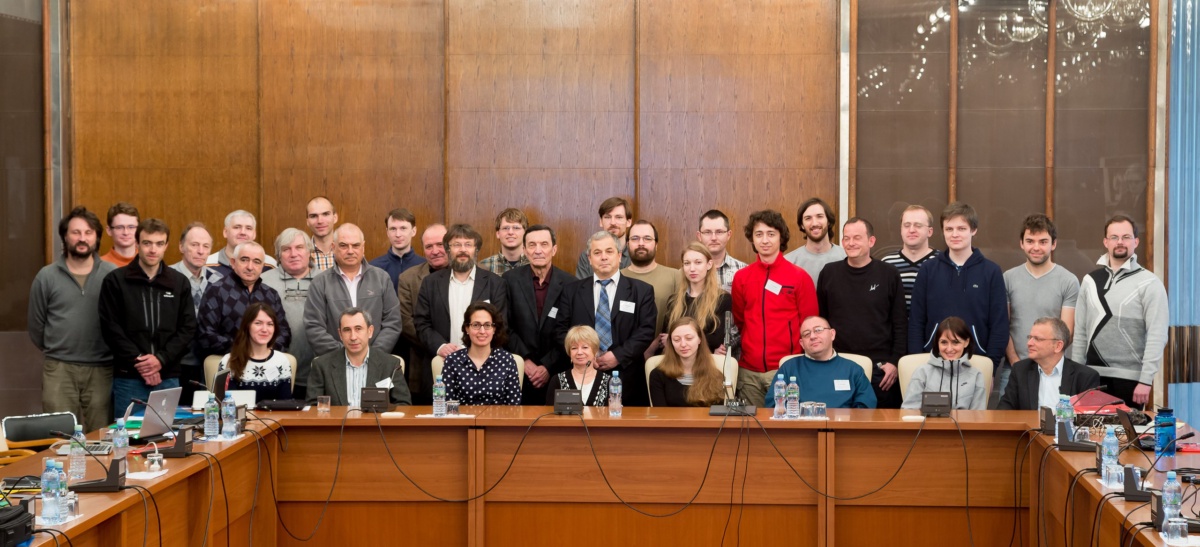The 2020 DLNP Research Award Competition: Boris Popov about the Research of Hadron Production in Proton−Nucleus Interactions in NA61/SHINE (CERN) to Precisely Predict Neutrino Spectra and Fluxes in T2K (Japan)
Recently, the results of the 2020 Research Award Competition of the Dzhelepov Laboratory of Nuclear Problems have been announced. The DLNP Group of Scientific Communication spoke with the winners about their research.
One of the two second Prizes was awarded to the authors: S. A. Bunyatov, A. V. Krasnoperov, B. A. Popov, V. V. Tereshchenko from the Experimental Department of Multiple Hadronic Processes and V. V. Liubushkin from the Section of Elementary Particles for the series of papers “Research of hadron production in proton−nucleus interactions in the NA61/SHINE experiment (CERN) to precisely predict neutrino spectra and fluxes in the T2K accelerator experiment (Japan)”.
We talked to Boris Albertovich Popov about the research behind this series.

 Boris Popov
Boris Popov
Neutrino physics is one of the DLNP priorities. One of the research fields is accelerator neutrino physics in which the Experimental Department of Elementary Particle Physics headed by Stepan Agaronovich Bunyatov was engaged as far back as 1980s. The research was performed at the facility “IHEP-JINR Neutrino Detector” at the U-70 accelerator. Later, the group from our Laboratory joined the NOMAD experiment at CERN whose major objective was the search for neutrino oscillations.
In 2010, T2K (Tokai to Kamioka), a new-generation neutrino experiment, was launched to study accelerator neutrinos produced by the proton synchrotron at the J-PARC complex (Tokai, Japan). The accelerator neutrino beam is sent first to the Near Detector ND280 located 280 m away from the target, and then to the Far Detector Super-Kamiokande located 300 km away from the accelerator. Scientists study oscillations of muon neutrinos (and antineutrinos), that is, their ability to morph into another type of neutrinos (and antineutrinos), comparing the number of expected and detected events and their energy spectrum at different distances from the source.
An accelerator neutrino beam is usually created as follows. A proton beam is directed to an extended beryllium or carbon target (a cylinder with a length of 90 cm and a diameter of 2.6 cm) (a carbon target in the T2K experiment). Protons interact with the target producing secondary charged particles led with magnets into the so-called decay channel where they decay emitting neutrinos or antineutrinos (depending on polarity of magnets able to focus positive or negative secondary particles). The neutrino beam and its composition are measured first at the Near and then at the Far Detector. Oscillation parameters are determined in this way.
To measure these parameters more accurately, scientists have to examine a neutrino flux with a maximum precision. An auxiliary experiment at the SPS accelerator at CERN was performed for this very purpose. Physicists reconstructed the T2K neutrino beam conditions — the proton beam was delivered to the target, and secondary particle yields were determined by the NA61/SHINE magnetic spectrometer.
Such a study conducted “in parallel” was necessary since intensity of the proton beam, of secondary particles and of target irradiation is extremely high in real conditions of a neutrino experiment. And to detect a particle beam as long as the experiment lasts is impossible. That is why the T2K conditions were reconstructed at CERN, but with a lower intensity of the accelerator beam and of the secondary particle flux.
At first, a thin target was used for measurements, and later, a T2K replica carbon target. The thin target was needed to test the technology of the experiment and to get more accurate calculations.


Inside the NA61/SHINE experiment at CERN (Image: CERN)
Why was it so important to perform this experiment? To calculate beam parameters, simulation is usually used. The auxiliary experiment at the NA61/SHINE spectrometer delivered real data. Their precision is rather high, which reduces the degree of uncertainty and allows significantly decreasing statistics accumulation time in the main T2K experiment.
Despite the fact that the papers of the series were published on behalf of a large international collaboration, these were the physicists from the Laboratory of Nuclear Problems who made the major contribution to this part of the NA61/SHINE scientific programme. This was confirmed by the appointment of a DLNP group representative to be in charge of preparation of papers 1 and 3 for publishing and a chief editor of all papers of the series. The central paper is written to commemorate Stepan Agaronovich Bunyatov, an inspirer and one of the organizers of this research.
The NA61/SHINE magnetic spectrometer is also employed for other experiments in heavy ion physics and for cosmic ray studies.
Boris Albertovich added that the overall objective of the T2K experiment is to scrutinize asymmetry between matter and antimatter in the Universe using neutrino oscillations. It is investigation and comparison of the neutrino and antineutrino oscillation probability that can elucidate whether the CP symmetry in the lepton sector is violated.
 NA61/SHINE collaboration meeting in Dubna in 2014
NA61/SHINE collaboration meeting in Dubna in 2014
*The series of papers awarded the second Prize of the 2020 DLNP Research Award Competition:
1. N. Abgrall et al. [NA61/SHINE Collaboration https://link.springer.com/article/10.1140%2Fepjc%2Fs10052-016-3898-y
2. N. Abgrall et al. [NA61/SHINE Collaboration https://link.springer.com/article/10.1140%2Fepjc%2Fs10052-016-4440-y
3.** N. Abgrall et al. [NA61/SHINE Collaboration https://link.springer.com/article/10.1140/epjc/s10052-019-6583-0
4. A. Acharya et al. [NA61/SHINE Collaboration https://journals.aps.org/prd/abstract/10.1103/PhysRevD.103.012006">https://journals.aps.org/prd/abstract/10.1103/PhysRevD.103.012006
Читайте также:
Эксперимент Т2К: открыт новый тип нейтринных осцилляций
Результаты конкурса научных работ ЛЯП за 2020 год

